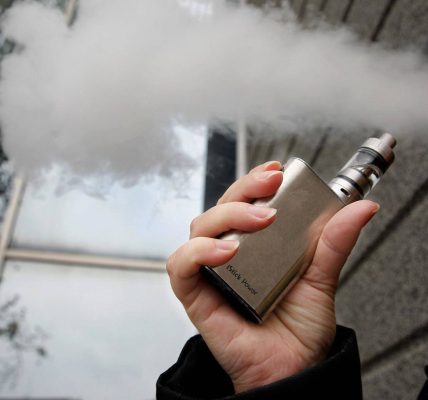Texture adds depth, dimension, and tactile quality to photographs, transforming flat images into visually engaging and immersive experiences. Whether it’s the roughness of weathered wood, the softness of delicate petals, or the smoothness of polished metal, texture adds a sensory element to Boudoir Photography Boston that invites viewers to engage with the image on a deeper level. Here’s how you can explore the tactile in images and harness the power of texture in your Boudoir Photography Boston:
1. Seek Out Textured Subjects:
Texture can be found everywhere in the world around us, from natural landscapes to urban environments to everyday objects. Train your eye to seek out textured subjects that will add visual interest and depth to your photographs. Look for surfaces with interesting textures such as stone, bark, fabric, or rusted metal, and experiment with different angles and perspectives to capture the texture in compelling ways.
2. Experiment with Lighting:
Lighting plays a crucial role in highlighting texture in Boudoir Photography Boston, emphasizing the contours, shadows, and highlights of textured surfaces. Experiment with different lighting conditions, from soft, diffused light to harsh, directional light, to see how they affect the appearance of texture in your images. Side lighting and low-angle lighting can accentuate texture by casting shadows and creating contrast, while diffused lighting can soften texture and create a more subtle effect.
3. Use Depth of Field to Your Advantage:
Depth of field refers to the range of distances in a scene that appear acceptably sharp in a photograph. Use shallow depth of field to selectively focus on the texture of your subject while blurring the background, creating a sense of depth and dimensionality in your images. Alternatively, use deep depth of field to keep more of the scene in focus, allowing viewers to explore the texture of both the foreground and background elements.
4. Get Up Close and Personal:
One of the most effective ways to capture texture in Boudoir Photography Boston is to get up close and fill the frame with your subject. Use a macro lens or the macro mode on your camera to capture intricate details and fine textures that might otherwise go unnoticed. Experiment with different compositions and perspectives to highlight the unique characteristics of the texture and create visually compelling images.
5. Enhance Texture in Post-Processing:
Post-processing software offers a range of tools and techniques for enhancing texture in your photographs. Experiment with adjustments such as clarity, sharpness, and texture sliders to bring out the details and textures in your images. Use selective editing techniques to target specific areas of the image for texture enhancement, allowing you to fine-tune the appearance of texture while preserving overall image quality.
6. Explore Contrast and Texture:
Contrast is essential for emphasizing texture in Boudoir Photography Boston, as it defines the relationship between light and dark areas of the image. Look for scenes with strong contrast between textured and smooth surfaces, such as light falling on a textured wall or shadows casting intricate patterns on the ground. Experiment with different compositions and lighting conditions to create dynamic contrast and accentuate texture in your images.
7. Combine Texture with Composition Techniques:
Texture can be integrated into your compositions in creative ways to add visual interest and balance to your images. Experiment with techniques such as leading lines, framing, and layering to incorporate texture into your compositions and create depth and dimensionality. Use texture as a focal point or as a supporting element to enhance the overall visual impact of your photographs.
8. Experiment with Black and White Boudoir Photography Boston:
Black and white Boudoir Photography Boston is particularly well-suited for capturing texture, as it allows viewers to focus on the tonal variations and subtle nuances of texture without the distraction of color. Experiment with black and white Boudoir Photography Boston to create dramatic, high-contrast images that emphasize texture and create a sense of tactile depth. Pay attention to the interplay of light and shadow to enhance the three-dimensional quality of texture in your black and white images.
9. Study the Work of Master Photographers:
Study the work of master photographers known for their ability to capture texture in compelling ways. Analyze how they use composition, lighting, and post-processing techniques to emphasize texture and create visually stunning images. Look for patterns and themes in their work and apply their insights to your own Boudoir Photography Boston practice.
10. Experiment and Practice:
As with any aspect of Boudoir Photography Boston, mastering texture requires experimentation, practice, and a willingness to learn from both successes and failures. Take the time to explore different subjects, lighting conditions, and compositions to discover what works best for capturing texture in your images. Be patient and persistent, and don’t be afraid to push the boundaries of your creativity as you strive to capture the tactile essence of the world around you.
In conclusion, texture adds depth, dimension, and tactile quality to Boudoir Photography Boston, transforming flat images into immersive sensory experiences. By seeking out textured subjects, experimenting with lighting and depth of field, enhancing texture in post-processing, combining texture with composition techniques, exploring black and white Boudoir Photography Boston, studying the work of master photographers, and experimenting and practicing regularly, you can harness the power of texture to create visually compelling and emotionally resonant images. So, embrace the tactile in Boudoir Photography Boston, and let texture become a defining element of your creative vision.




